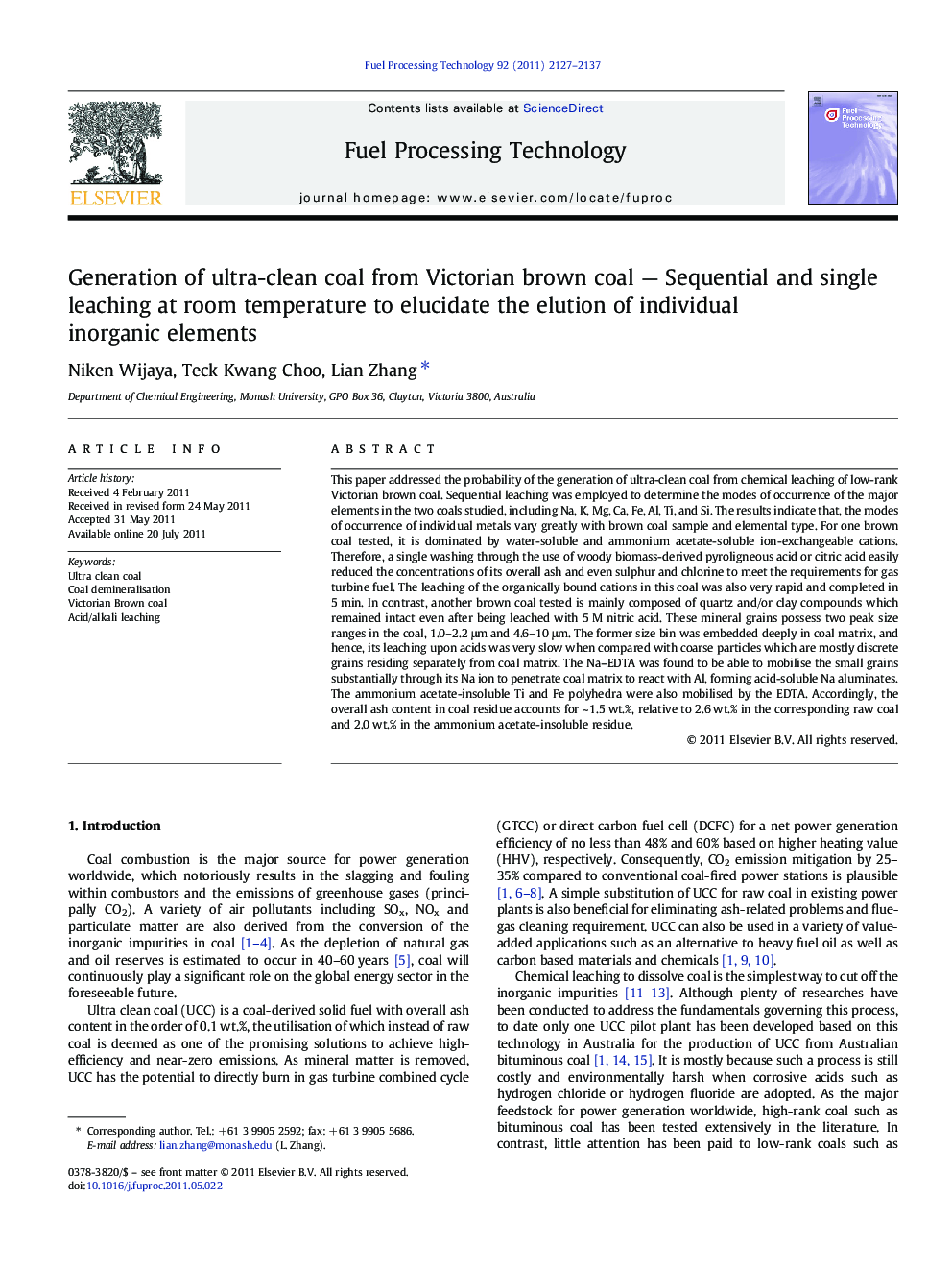| Article ID | Journal | Published Year | Pages | File Type |
|---|---|---|---|---|
| 210372 | Fuel Processing Technology | 2011 | 11 Pages |
This paper addressed the probability of the generation of ultra-clean coal from chemical leaching of low-rank Victorian brown coal. Sequential leaching was employed to determine the modes of occurrence of the major elements in the two coals studied, including Na, K, Mg, Ca, Fe, Al, Ti, and Si. The results indicate that, the modes of occurrence of individual metals vary greatly with brown coal sample and elemental type. For one brown coal tested, it is dominated by water-soluble and ammonium acetate-soluble ion-exchangeable cations. Therefore, a single washing through the use of woody biomass-derived pyroligneous acid or citric acid easily reduced the concentrations of its overall ash and even sulphur and chlorine to meet the requirements for gas turbine fuel. The leaching of the organically bound cations in this coal was also very rapid and completed in 5 min. In contrast, another brown coal tested is mainly composed of quartz and/or clay compounds which remained intact even after being leached with 5 M nitric acid. These mineral grains possess two peak size ranges in the coal, 1.0–2.2 μm and 4.6–10 μm. The former size bin was embedded deeply in coal matrix, and hence, its leaching upon acids was very slow when compared with coarse particles which are mostly discrete grains residing separately from coal matrix. The Na–EDTA was found to be able to mobilise the small grains substantially through its Na ion to penetrate coal matrix to react with Al, forming acid-soluble Na aluminates. The ammonium acetate-insoluble Ti and Fe polyhedra were also mobilised by the EDTA. Accordingly, the overall ash content in coal residue accounts for ~ 1.5 wt.%, relative to 2.6 wt.% in the corresponding raw coal and 2.0 wt.% in the ammonium acetate-insoluble residue.
Research highlights► The structures of mineral matters in brown coals vary greatly with coal samples. ► Ion-exchangeable cations and water soluble minerals are extractable into weak acids in 5 min. ► The fine mineral grains with a size range of 1–2.2 mm are embedded within brown coal matrix and are difficult to mobilise. ► The ultra-clean coal produced from brown coal has a great potential for gas turbine fuel. ► Na-EDTA promotes the mobilization of the elements such as iron, aluminum and titanium which are organically bound as octehedra hydroxide species within brown coal matrix.
